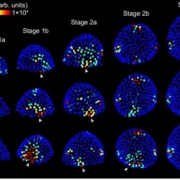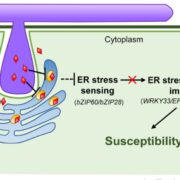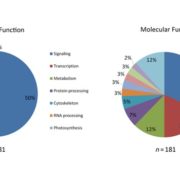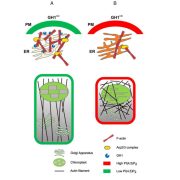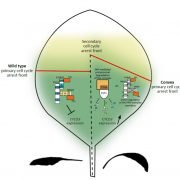Expanding the resolution limits of conventional microscopy in whole plant tissues
How can we precisely image plant tissues in super-resolution when approaching the optical limits of conventional microscopes? One solution lies in expansion microscopy, a technique that embeds tissue samples in an expandable hydrogel that proportionally increases the distances between structures, allowing the user to image them clearly on microscopes that would be diffraction-limited at such fine scales. While this technique has been applied to many fields of biology, and even plant protoplasts (see “Cells are larger than life when ExPOSEd“), whole plant tissues present particular challenges due to their rigid and cohesive cell walls. In this paper, Gallei, Truckenbrodt and colleagues describe PlantEx, a plant-specific expansion microscopy protocol that includes a cell wall digestion step crafted to address these challenges. This process is demonstrated with Arabidopsis thaliana root tissue and the results confirmed to introduce no significant distortion to tissue architecture. PlantEx is also combined with stimulated emission depletion microscopy to further increase resolution and enable subcellular imaging. PlantEx can only be performed on fixed tissues and would require calibration for application to other plant species and tissue types, but it has transformative potential in increasing ease and accessibility of super-resolution imaging for plant biology. (Summary by Elise Krespan) Plant Cell 10.1093/plcell/koaf006


